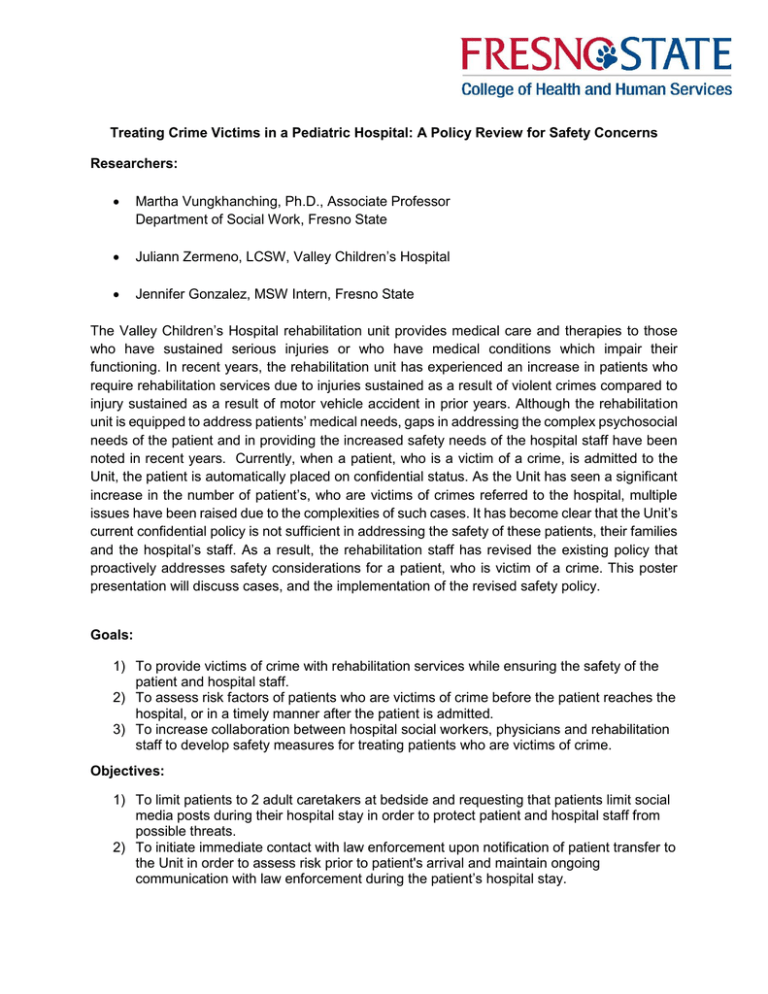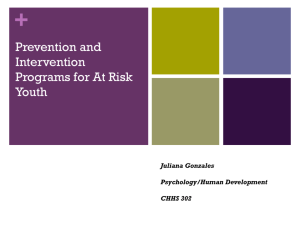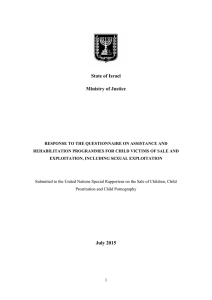Document 13111371
advertisement

Treating Crime Victims in a Pediatric Hospital: A Policy Review for Safety Concerns Researchers: Martha Vungkhanching, Ph.D., Associate Professor Department of Social Work, Fresno State Juliann Zermeno, LCSW, Valley Children’s Hospital Jennifer Gonzalez, MSW Intern, Fresno State The Valley Children’s Hospital rehabilitation unit provides medical care and therapies to those who have sustained serious injuries or who have medical conditions which impair their functioning. In recent years, the rehabilitation unit has experienced an increase in patients who require rehabilitation services due to injuries sustained as a result of violent crimes compared to injury sustained as a result of motor vehicle accident in prior years. Although the rehabilitation unit is equipped to address patients’ medical needs, gaps in addressing the complex psychosocial needs of the patient and in providing the increased safety needs of the hospital staff have been noted in recent years. Currently, when a patient, who is a victim of a crime, is admitted to the Unit, the patient is automatically placed on confidential status. As the Unit has seen a significant increase in the number of patient’s, who are victims of crimes referred to the hospital, multiple issues have been raised due to the complexities of such cases. It has become clear that the Unit’s current confidential policy is not sufficient in addressing the safety of these patients, their families and the hospital’s staff. As a result, the rehabilitation staff has revised the existing policy that proactively addresses safety considerations for a patient, who is victim of a crime. This poster presentation will discuss cases, and the implementation of the revised safety policy. Goals: 1) To provide victims of crime with rehabilitation services while ensuring the safety of the patient and hospital staff. 2) To assess risk factors of patients who are victims of crime before the patient reaches the hospital, or in a timely manner after the patient is admitted. 3) To increase collaboration between hospital social workers, physicians and rehabilitation staff to develop safety measures for treating patients who are victims of crime. Objectives: 1) To limit patients to 2 adult caretakers at bedside and requesting that patients limit social media posts during their hospital stay in order to protect patient and hospital staff from possible threats. 2) To initiate immediate contact with law enforcement upon notification of patient transfer to the Unit in order to assess risk prior to patient's arrival and maintain ongoing communication with law enforcement during the patient’s hospital stay. 3) To conduct daily assessments using documentation from nurses, therapists and social workers to assess potential safety concerns and update hospital staff of any identified safety concerns in weekly multidisciplinary rehab rounds





